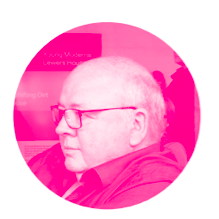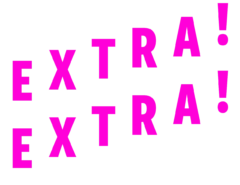by Ian Milliss
Ian Milliss is an artist who worked on Wrapped Coast.

In 2018 the architect collective Forensic Architecture was nominated for the prestigious Turner Prize. Although they didn’t win the jury praised them for their ‘highly innovative methods for sourcing and visualising evidence relating to human rights abuses around the world, used in courts of law as well as exhibitions of art and architecture’.
Forensic Architecture has been described as an “architectural detective agency” which has used sophisticated spatial analysis to investigate a range of human rights abuses and hate crimes. The group represents a trend that has been slowly developing in contemporary art during the fifty years history of Kaldor projects, a new type of realism that presents research in traditional art venues, often accompanied by activist interventions away from those venues. It is also an example of the dissolving boundaries of previously compartmentalised occupations, like architect, artist, journalist. The institutional definition of art, that anything is art if the art world powers accept it as art, can now allow other professions to be absorbed as long as part of their production can be exhibited and thereby satisfy the insatiable demand for content that drives large art institutions.
Duchamp’s readymades in the early twentieth century ended the idea that visual arts must necessarily be painting or sculpture. Although it took the art world a long time to digest this, by the early 1970s a number of tendencies were coming together. Artists were moving in stages from formalist abstraction, with its purist focus on painting as an end in itself, into a renewed engagement with the world. The critic Rosalind Krauss in her influential 1979 essay “Sculpture in the Expanded Field” described 1968-1970 as the critical years when artists began to see artistic agency as extending beyond the art gallery.
This process was undoubtedly driven by the political upheavals of the time such as the Vietnam War, the civil rights movement, anti colonial wars around the globe, and the Paris uprising of 1968. Artists were faced with the problem of creating an art that reflected these concerns, that engaged with this world, but did not lose the aesthetic potential of formalism. Initial responses were minimalism and conceptualism, both seen in Sol Lewitt’s reduction of painting to sets of instructions, algorithms that generated paintings without the artist’s aesthetic control. Meanwhile the use of new technologies like photocopying and video generated forms that could not quite so readily be accommodated by the art market of the time.
Christo and Jeanne-Claude’s Wrapped Coast was one of the greatest examples of the time demonstrating not just that unconventional materials, including the landscape itself, could be part of the art work, but also that intangible processes like organisation were also viable art materials. Wrapped Coast was not just a physical presence, it was as much an event about the idea of organising a large workforce in an aesthetic project, an approach echoed later in Santiago Sierra’s more sinister 2010 project in which a team of twenty eight low paid workers held up seven long box like forms, a work with disturbing undertones of exploitation, bullshit jobs, and the things people will do to avoid living “underneath the arches” with the homeless subject of Gilbert and George’s background song.
In New York the artist Hans Haacke, already well known for his work with natural processes, began looking at human systems such as the real estate market, and the way it was manipulated by landlords. The cancellation of his Guggenheim Museum exhibition was a watershed, arguably the beginning of what was known as institutional critique, art that analysed the social and power relationships in judgements of cultural significance. The ostensible reason, that it was journalism not art, was more a cover up than a reason and like all cover ups, as Christo and Jeanne Claude had proven, it drew attention to what was being covered up, the alliance of the wealthy and powerful that also dominated the boards of major cultural institutions and the way those institutions served to protect wealth.
Some of the political radicalism of the time continued in activist artist groups around particular issues, most conspicuously feminist issues in the 1970s and AIDS awareness in the 1980s. Institutional critique was slowly tamed and absorbed by the institutions, often reduced to little more than artists being allowed to play curator, selecting shows of more eccentric works from museum collections.
But a strong thread of artists working outside the conventional framework persisted, often around environmental issues and an emphasis on demonstrating factual information. For instance, Mierle Laderman Ukeles became the New York City Department of Sanitation’s unpaid artist-in-residence in the late 1970s where her actions, like shaking the hand and thanking every one of the department’s workers, a project that took five years, served to focus on the almost unseen social structures that maintain civil society. At the same time The Harrison Studio began its long series of major ecology projects, based on extensive social and scientific research. These projects assumed that the entire earth and its systems could be treated as a sculpture that humans were responsible for maintaining and developing.
In Australia, Ian Milliss’s 1975 AGNSW exhibition about the work of innovative agriculturalist PA Yeomans was, like Haacke’s exhibition, cancelled at the last moment by the Board of Trustees on the grounds that it was not art. It eventually happened thirty eight years later in 2013 as a collaboration with Lucas Ihlein, by which time it had apparently become art. We have since collaborated with over a dozen other artists in setting up the Kandos School of Cultural Adaptation, one of the collaborators in Asad Raza’s Absorption project. The School produces science based projects that are mostly around land use and agriculture.
All of these and many other projects internationally have one thing in common, they are a new form of artistic realism based on investigation, in researching and presenting information, and that could equally be a definition of investigative journalism. So are we now journalists as much as we are artists? As other professions like the architects of Forensic Architecture are absorbed into mainstream art can we also see previously distinct professions like artist or journalist now blending together? Is the only difference the means of distributing information, or the degree of speculation and experiment that can be accommodated?
